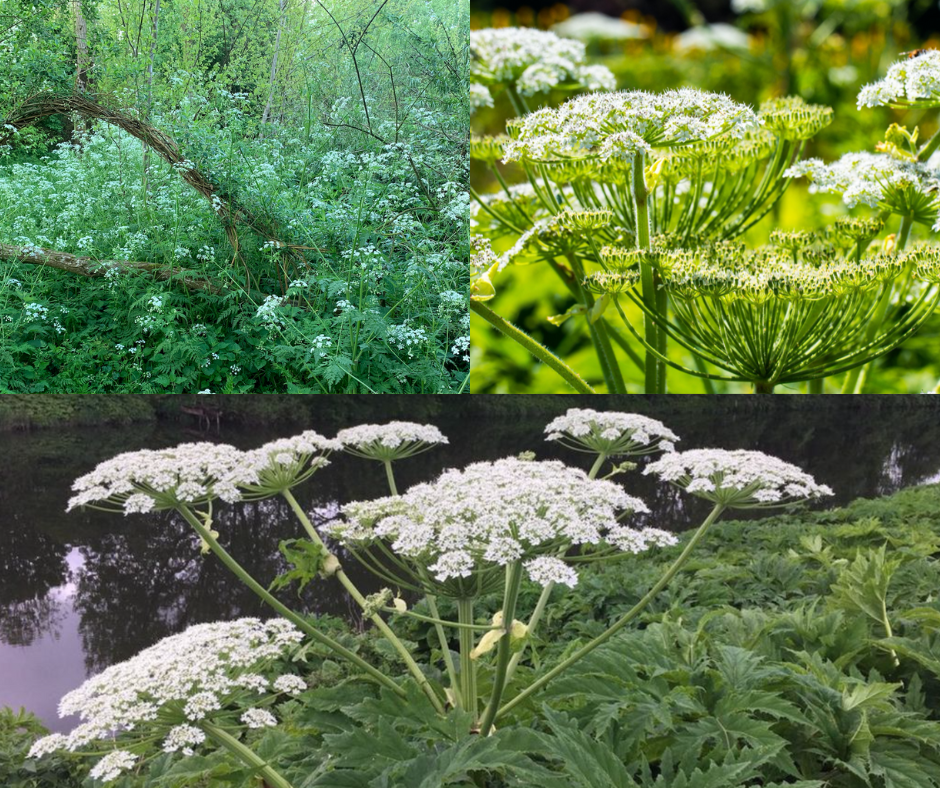I was asked by a friend if I knew of a plant that looks like cow parsley, but burns people’s skin. Well, I think he wishes he’d never asked. Ten minutes of me wittering on later, and he looked like he’d been run over by a bus. I got to thinking (Carrie Bradshaw-style)... I could write a blog post about it. Pop the kettle on!
As parents, ensuring the safety of our children is our top priority. While exploring the great outdoors with our little ones, it is essential to be aware of potential dangers, including certain umbellifer plants that can pose risks. I will focus on three common umbellifers: cow parsley, common hogweed, and giant hogweed. By understanding their differences, we can protect our children from potential harm while enjoying nature's beauty.
Cow Parsley (Anthriscus sylvestris)
Cow parsley, also known as Queen Anne's lace, is a delicate and common umbellifer plant found in meadows, woodlands, and roadside verges. Its appearance can be misleading, as it shares some similarities with other umbelliferous plants. However, cow parsley is generally safe and non-toxic.
 Identification:
Identification:
- Height: Cow parsley typically reaches a height of 60-120 cm (2-4 feet).
- Leaves: Its fern-like, dark green leaves are divided into multiple leaflets.
- Flowers: Cow parsley produces small white flowers arranged in umbrella-shaped clusters called umbels. The clusters are flat and broad, creating a lacy appearance.
Common Hogweed (Heracleum sphondylium)
Common hogweed, also known as common cow parsnip, is a native umbellifer found in meadows, woodland edges, and hedgerows. While it can cause mild skin irritation in some individuals, it is generally less harmful than its larger relative, giant hogweed.

Identification:
- Height: Common hogweed grows to a height of about 60-150 cm (2-5 feet).
- Leaves: The plant has large, lobed leaves with a rough texture and a slightly serrated edge.
- Flowers: Common hogweed produces white or pinkish-white flowers arranged in umbels. The clusters are more rounded and compact than cow parsley.
Giant Hogweed (Heracleum mantegazzianum)
Giant hogweed is an invasive species that poses a significant risk to human health. Its sap contains toxic chemicals that can cause severe skin irritation and, in some cases, even blindness. It is crucial to educate ourselves about the distinctive features of giant hogweed to avoid contact with this dangerous plant.
Identification:
- Height: Giant hogweed is the tallest of the three, reaching heights of 2-5 metres (6-16 feet).
- Leaves: The leaves are large, deeply lobed, and resemble those of common hogweed. They have a coarse, hairy texture.
- Flowers: Giant hogweed produces large, white, umbrella-shaped flower clusters that can span up to 80 cm (31 inches) in diameter.
Precautions and Safety Measures:
- Educate your children about the dangers of touching or approaching any unfamiliar plants.
- Teach your children not to touch or handle plants without your permission and supervision.
- If you come across giant hogweed, common hogweed, or any plant you are unsure about, maintain a safe distance and inform the local authorities or relevant experts for proper identification and removal.
By familiarising ourselves with the distinguishing characteristics of cow parsley, common hogweed, and giant hogweed, we can safeguard our children from potential harm while enjoying outdoor adventures. We love to encourage a sense of curiosity and exploration in our little ones, but must always prioritise their safety. With knowledge and awareness, we can create memorable experiences in nature while minimising any potential risks.

